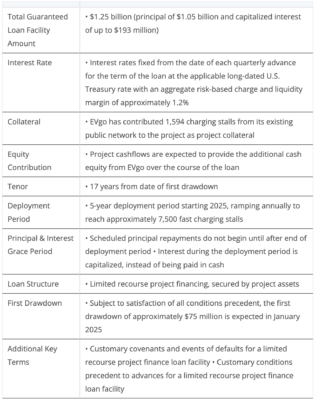The long-term winners as AI boosts U.S. power needs, according to Mizuho


Power demand from data centers is expected to triple by 2030 as the use of artificial intelligence scales up at a rapid pace, driving an explosion in renewable energy and natural gas, according to Mizuho Securities. The demand from data centers will reach 400 terawatt hours, or 50 gigawatts annually, representing about 9% of total U.S. electricity demand by the end of the decade, according to a 38-page Mizuho report published Friday. About 30% of current data center demand is located in the mid-Atlantic region, followed by Texas, home to 13%. Renewables are expected to grow the most due to the technology sector’s climate commitments, with solar demand increasing by 7 gigawatts annually and wind growing by 5 gigawatts per year through 2030. This represents upside of 21% and 39% for solar and wind, respectively, over Mizuho’s current forecast. In the renewable space, solar tracker companies such as Nextracker and Array will likely benefit the most because they can “can easily ramp up production capacity via steel contract manufacturers in a capital light fashion,” analyst Maheep Mandloi told clients. Nextracker could see $4 upside to Mizuho’s current price target of $59 per share based on generative AI demand, assuming it holds 45% market share in the U.S., while Array could capture $2 upside to Mizuho’s price target of $13 per share. Solar module manufacturing stocks such as First Solar , on the other hand, probably won’t move much until the outcome of the November presidential election determines whether the Inflation Reduction Act remains intact, Mandloi wrote. Companies such as First Solar are also likely to face more competitive pressure should the IRA stay in place, the analyst said. Still, First Solar could see $17 upside to the current price target of $274 per share. Natural gas demand, meanwhile, is expected to increase by up to 4 billion cubic feet per day by 2030, or 4% of current U.S. production, according to Mizuho. If the expansion of renewables proves slower than expected, gas demand could rise by up to 8 billion cubic feet per day by the end of the decade. Gas will largely play a backup role, filling the gap when solar and wind power drops due to weather conditions, and strengthening supplies in areas of the country where data centers are not located next to renewable plants, according to the report. Gas producers such as EQT Corp. will likely prove the primary beneficiaries, because they supply key data center markets in the mid-Atlantic and Southeast, Mizuho analyst Nitin Kumar told clients. Pipeline operators Williams Companies and Kinder Morgan also gain due to their incumbency advantage, as there is uncertainty over whether new interstate pipelines will be built in the U.S., wrote analyst Gabriel Moreen. Independent power producers such as Constellation Energy are also well-positioned if they are able to sign agreements to power data centers using their nuclear fleet, analyst Anthony Crowdell said. Though enthusiasm for AI power demand is high, Mizuho analysts cautioned that the industry also faces multiple bottlenecks, with new power projects taking up to five years to get permitted and connected to the grid. “Renewable investments could also be delayed if a new administration cancels incentives under the Inflation Reduction Act (IRA), or imposes higher import tariffs,” the analysts wrote. This post has been syndicated from a third-party source. View the original article here.



